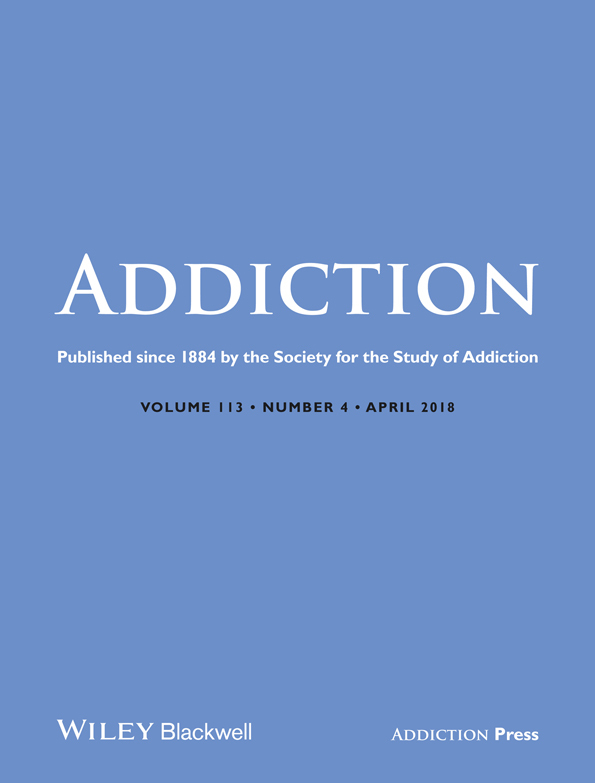Commentary on Chang et al. (2018): Assessing prescribing volume and patient risk—implementation considerations
Identifying high-volume prescribing practices and high-risk patients is an important step in changing opioid prescribing practices. Deciding which behaviours to target, and then effectively implementing strategies to reduce opioid-related harm, is another challenge altogether.
The work by Chang et al. 1 provides a useful characterization of opioid prescribing patterns. This study of more than 4 million patients identified high- and low-risk patients who receive opioids, in addition to high- and low-volume prescribers. Chang et al. 1 found that patients who see high-volume prescribers are more likely to receive more opioids, yet low-volume prescribers also contribute importantly to overall opioid supply.
The differences in opioid prescribing patterns identified have important policy and practice implications. Chang et al. 1 suggest that interventions should target prescribers' practices, but this suggestion is not without its challenges when we take into account the complex processes of policy implementation.
Governments have at their disposal a number of tools or ‘policy levers’ that can be used to influence prescribing practices and reduce opioid-related harms, such as taxation, regulation, subsidies, education and consultation or bureaucratic reforms 2. To influence opioid prescribing practices, a range of levers may be used synergistically, including clinical guidelines, monitoring systems and regulations at the state and federal level; however, not all these strategies are equally effective, if effective at all, for reducing opioid-related harm 3, 4. Moreover, the effectiveness of any given strategy is related as much to how it is implemented as to what is implemented. As the World Health Organization (WHO) have noted, ‘One of the greatest challenges facing the global health community is how to take proven interventions and implement them in the real world’ 5.
Prescription monitoring is a case in point where an intervention aimed at prescribers can have mixed results 3. The effectiveness of prescription monitoring depends largely upon how the programme is implemented (for example, whether or not it is mandatory), how well-trained health-care professionals are to respond to those patients identified through prescription monitoring and what services are in place to support such patients. A prescription monitoring programme may also have unintended consequences, such as reducing appropriate medication use and/or shifting prescribing to less regulated but more harmful substances.
Another common approach to influence prescribing practices is guidelines. Traditionally, guidelines have not been adopted into practice readily due to a lack of training, attitudinal barriers or implementation challenges related to external or environmental factors such as insufficient remuneration for services 4. To be effective, guidelines require implementation strategies. More recently published work has tested implementation strategies for opioid prescribing guildeines such as academic detailing and use of narratives aimed at increasing the primary care clinician's guideline concordance or recall 6, 7. This work has shown that it is possible to increase concordance using these strategies.
Approaches such as guidelines and prescription monitoring are universal interventions, in that they are intended to apply to all prescribers. However, the study by Chang et al. 1 suggests that policy approaches ought to target low- and high-volume prescribers directly in order to change practices and reduce harms. If a mix of universal and targeted approaches is required, which is usually the case when thinking about how to achieve policy objectives, decisions must be made as to the relative investment in various strategies. In this paper we see that high-volume prescribers (fewer than 5% of prescribers) prescribe the majority of opioids. Intuitively, one might suggest that approaches therefore ought to target those engaged in these ‘high-volume’ prescribing practices. As prescription monitoring programmes continue to develop there is enormous potential to refine the use of these data sets to identify high-risk prescribing practices to enable targeted interventions 8. A range of approaches using algorithms to identify high-risk prescribers are emerging 9. Previous work has demonstrated that high-volume prescribers may be targeted effectively by policy interventions, while low-volume prescribers were unaffected 10. However, given the scale of the problem of opioid-related harms, the greater challenge may be in identifying ways to effectively target low-volume prescribers. Changing the practices of a large number of low-volume prescribers may be difficult, and may represent an inefficient use of resources. Even though low-volume prescribers may contribute substantially to overall opioid supply, they prescribe to a relatively small proportion of high-risk patients, raising questions about the opportunity cost of targeting this group where resources are finite.
The challenge in responding to this research may not be necessarily related to questioning what we can or should do to change prescribing practices and reduce opioid-related harm. Rather, the challenge is how to think about the relative mix of investment in different approaches and the processes involved in successfully implementing chosen strategies in specific contexts.
Funding
S.N. is supported by an NHMRC research fellowship (no. 1132433). The National Drug and Alcohol Research Centre at the University of NSW is supported by funding from the Australian Government under the Substance Misuse Prevention and Service Improvements Grant Fund. The Centre for Social Research in Health is supported by a grant from the Australian Government Department of Health.
Declaration of interests
S.N. has received untied educational grants from Reckitt Benckiser and Indivior.




